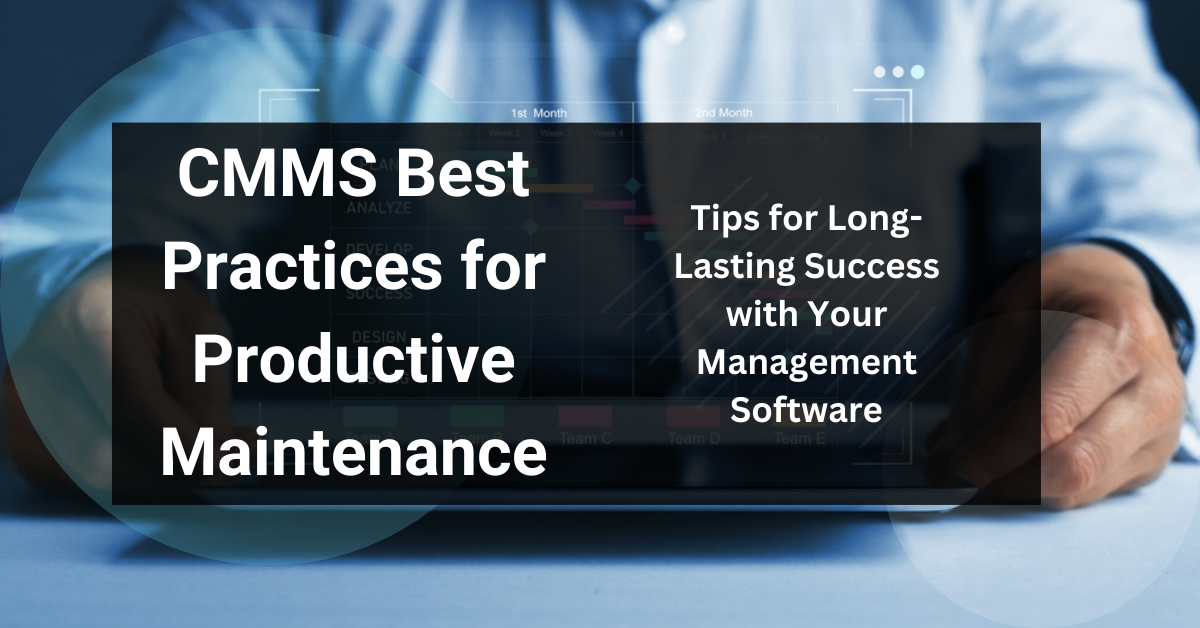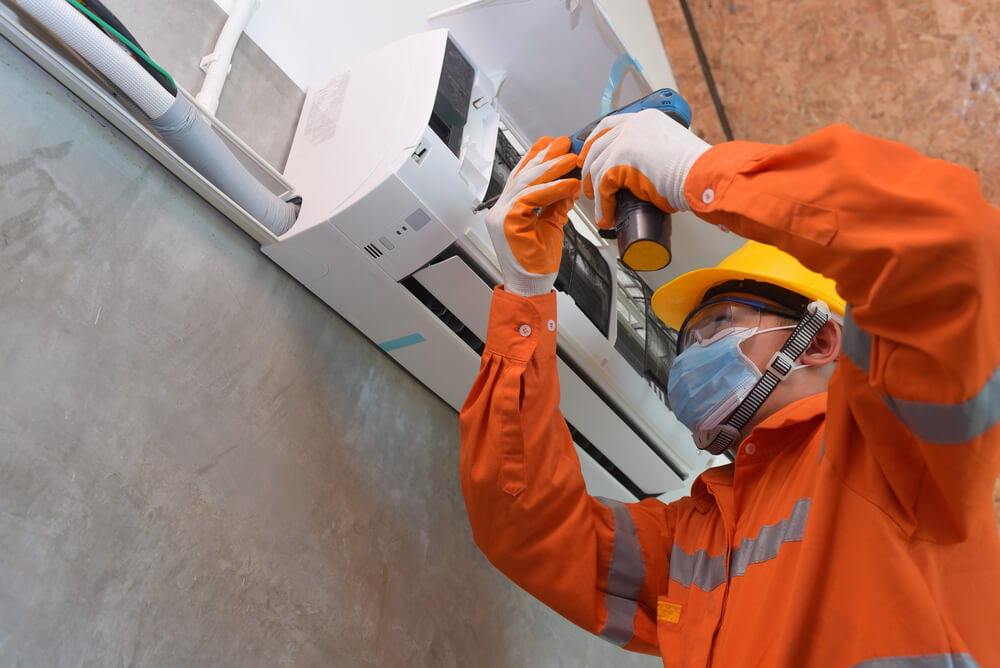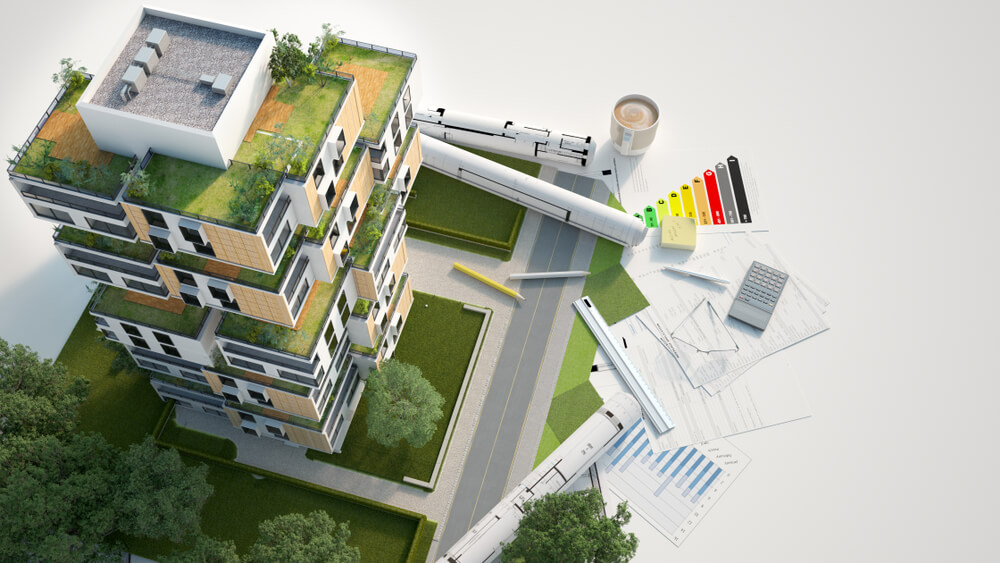How Do Facility Management Companies Ensure Building Safety?

Building safety and employee health is a top priority for facility management professionals.
Promoting office safety and security often overlap with other goals, like lower operational costs and improved working conditions for staff.
How do facility management companies ensure building safety and employee health?
Facility managers maintain safe, secure buildings by taking action on various measures to prevent and mitigate hazards.
Building safety is accomplished by inspecting a property for potential health and safety risks, developing an action plan to address these risks, and improving resilience.
The Most Common Building Safety Issues for Commercial Buildings
- Fire Safety: fire suppression systems are installed correctly, including sprinklers and alarms.
- Electrical Safety: all electrical systems are code-compliant, properly maintained, and inspected on a regular basis.
- Slip and Fall Hazards: identify and solve uneven surfaces, wet floors, loose carpeting, or obstructed walking areas.
- Indoor Air Quality: properly maintained HVAC systems, clean ductwork, and unclogged air filters.
- Security: maintain and inspect security systems, from surveillance or security cameras, locks, alarms, and other security measures.
- Emergency Preparedness: well-defined plans for rapid response to natural disasters, medical emergencies, or other unusual occurrences in a commercial building.
- Hazardous Materials: eliminating and controlling for toxic chemicals, asbestos, lead, mercury, chlorofluorocarbons, etc.
Risk Assessment
Assessing risks means finding ways to promote employee health and comfort — all of which impact productivity and engagement.
A comprehensive risk assessment starts with the following:
- Identifying primary risks
- Assess them and organize them by priority
- Develop mitigation strategies
- Monitor controls to ensure effective maintenance procedures
- Consistently review and improve
Emergency Planning
Always have a plan. This is a core motto in the FM industry. In fact…
Most facility management companies draft contingency plans to address any and all potential incidents, including events like fires, floods, and various natural disasters.
These plans often include detailed procedures for evacuating the building, calling emergency hotlines, or administering medical aid to people in need.
Regulatory Compliance
Facility management companies make regulatory compliance a priority. These code regulations are in place to promote safety and security for commercial properties, as well as general health for occupants (employees and customers alike).
FM managers carefully consider the security of your building by thoroughly reviewing the regulatory requirements for your facility, thereby preventing legal liabilities, protecting the environment, and improving operations as a whole.
Common Regulatory Requirements:
Environmental Protection Agency (EPA)
Americans with Disabilities Act (ADA)
National Fire Protection Association (NFPA)
Local Building Codes for Structural Safety, Electrical Systems, Plumbing & More
Energy Efficiency Standards (Vary by State)
Regular On-Site Inspection & Equipment Maintenance
The most important part of building safety is understanding the assets within a building and ensuring that they work effectively. This is where regular maintenance and inspection come in.
All building systems are reviewed. Everything from HVAC, electrical, plumbing, and fire safety systems are essential to ensure they are functioning correctly and pose no risk to building occupants.
Facility management companies should also carry out routine maintenance and repair work to keep the systems in good working order.
Cleaning & Disinfection
High-touch surfaces (door knobs, handrails, or elevator buttons) and areas with high foot traffic should be consistently cleaned and disinfected to prevent the spread of germs, bacteria, and viruses in the office building.
Clean, well-kept areas in your office are a critical component of maintaining a safe and healthy atmosphere for employees and customers. This is why many facility management teams offer “soft services” like janitorial work or waste management.
Employee Training & Awareness
At Omnia360, we always discuss safety protocols and procedures with our staff. We clearly and briefly explain what employees should do to promote a safe, secure working environment.
The same standard applies to most, if not all, businesses.
Building occupants should be aware of potential risks and be taught to respond effectively to emergencies. Education and know-how can go a long way in promoting a safer property.
Get 360 Degrees of Coverage for Your Building
Omnia360 Facility Solutions offers 24/7 maintenance for your commercial office building in the larger Cincinnati area. Call us today for a free consultation: 833.360.6642.
CMMS Best Practices for a Lean Organization

A maintenance management system is a lifesaver for any facility management company, automating and streaming work processes that save time and money.
In today’s post, Omnia360 Facility Solutions in Cincinnati, Ohio, will cover the best practices for using a computerized maintenance management system (CMMS).
Ensuring your CMMS is being used properly requires a few fundamental things:
- Proper Planning
- Organization
- Time Investment
- Streamlined Implementation
Here are just a few best practices to ensure you are getting the maximum results from your CMMS.
Testing, Testing & Testing
It’s exciting to get that new piece of software up and running. But it’s worth exercising patience here.
You might get lost in the excitement and forget to do something fundamental before you launch…Test.
Your CMMS must go through a testing stage in order to debug any code errors and ensure it’s operating at high capacity.
Conduct user testing to check for:
- Security
- Permissions for project groups
- PM triggers, notifications
- Maintenance request submissions
- Inventory details
This is the stage where you realize your CMMS either has or lacks the proper capabilities for optimal productivity. Thankfully, all of this occurs before launch.
Configure the Software to Fit Your Needs
Are there particular goals you need to meet? Configure the software to ensure the right metrics are prioritized so that you can meet your targets.
- You can label assets and equipment with QR codes for easy management
- Tag your assets for quicker inventory management
- Standardize data entry requirements (so things look the same and can be exported into spreadsheets easily without formatting issues)
Customize your CMMS to make it easy for employees, clients, or partners to read and interpret information.
Scrub, Organize and Migrate Your Data
Migrating any old data into your new system can get tricky. It’s to be expected. This is the nitty-gritty part of working with your CMMS.
If you have pre-existing data, you’ll need to make sure it’s scrubbed (cleaned) and organized to ensure no errors come up when it’s installed in the new system.
You’ll need to accurately transfer over relevant information like:
- Equipment types
- Workflows
- PM trigger frequencies
- SOPs
- Spare parts information
- Supplier details
After that, maintain and organize your existing data within a single database (reducing downtime and decreasing stress).
Doing this will ensure that you are measuring the right metrics to ensure progress is being made.
Get Buy-In & Put Everybody on the Same Page
You can’t just tell your team to start using it and expect the change to come on its own. You need to establish buy-in and support from the ground up.
Get your team involved by assigning appropriate responsibilities and giving them adequate training.
Management can show support by attending training sessions or asking questions about the user interface.
Find a Champion to Spearhead the CMMS Adoption
Find someone on your team who is willing to take the helm and be a spokesperson for your new software.
He or she will serve as a fountainhead of knowledge (a go-to person) while ensuring that everything stays on track and that employees are using it as needed.
Build an Ongoing Relationship with Your Vendor
When you buy maintenance management software, it should come with client support to ensure you can successfully use the new technology.
You need a vendor who is willing and able to help support your goals. So, right from the start, choosing a good vendor is critical. After that, proactive communication comes into play.
Ask questions about how to use the software and all of the features it comes with.
Not only will you get to know your system’s capabilities on a deeper level, but you’ll also be able to stay on top of any software updates, new features, or best-use tricks that save time and make implementation a breeze.
Before you even choose a CMMS vendor, get answers to these questions:
- What support services come available with the purchase?
- How long will the support team be involved? Is there a cut-off date after purchasing the CMMS software?
- Are there built-in ways to keep the team up to speed on maintenance?
Establish Training Procedures for the Whole Team
To avoid confusion and maximize productivity, employees need to know how to best use the CMMS. That means having some SOPs (standard operating procedures) to fall back on.
Documented systems and processes go a long way in reducing your stress levels if you’re onboarding a new CMMS.
Outline user responsibilities and roles and make the expectations clear. This will increase efficiency and accountability while allowing you to address problems quickly.
When creating training procedures and “how-to” documentation, it should include thorough, applicable content. Allow for real-time implementation (learning through doing), move along slowly, and ensure all questions are answered.
Always provide your staff with the chance to learn and develop their skillfulness in using the CMMS.
Instruct Users on How to Send Maintenance Requests
This is the bread-and-butter functionality of your CMMS — actually using it.
Users have to know exactly how to submit maintenance requests, export files, and perform other mundane clerical tasks in the software.
Make Sure Users are Getting a Hang of it
Unclear goals, responsibilities, and roles lead to missed targets, incomplete tasks, and all-around poor user adoption.
Employees may not be using it because there is not enough training available. It could boil down to a lack of support from management.
These problems are mitigated through strong SOPs, an implementation checklist, and a company culture of buy-in.
If problems still persist, think critically about potential solutions. There are growing pains when adopting a CMMS.
It’s expected.
However, if the CMMS isn’t pushing the organization forward, it may be time to adopt an entirely new action plan.
Keep a Watchful Eye on New Data Coming In
Watch the data you collect closely – especially in the initial stages of using the CMMS. Make sure there are no hard-to-locate errors popping up.
If you’ve properly cleaned and organized data beforehand, this shouldn’t be as much of an issue.
Continuously collect and analyze data for your equipment, organizational assets, work orders, and preventative maintenance to-do’s.
As you keep a close eye on maintenance data, make sure to keep up with your key performance indicators (KPIs), such as user adoption and maintenance metrics.
Iterate and Improve Your Processes
It’s launched. It’s live. That part of the job is done. But there are still improvements to be made.
- Keep tabs on how your team is interacting with the software and see if there are processes you can sure up to make things a bit more streamlined and efficient.
- Provide continuous training (employees can’t be expected to learn it all at once, drinking from a firehose).
Gather some feedback from users to get intimate knowledge of what frustrations may be there. Make changes as needed.
Is Your Building Ready for an Upgrade? Hire Omnia360 Facility Solutions in Cincinnati
We provide HVAC, electrical, plumbing, landscaping, and janitorial services for your building. Contact us today for a free consultation!
What are ‘Hard’ and ‘Soft’ Facility Management Services?

Every business has unique needs and requirements to perform optimally. The job of a facility management company is to ensure that all facets of a building are taken care of, from front to back, whether it’s HVAC and plumbing repairs or landscaping and window cleaning.
All FM services can be split up into two broad categories: hard and soft FM services.
What is the Difference Between Hard & Soft Services?
Hard Facility Management Services
“Hard services” are any maintenance or repair services that are integrated into the building, part of the infrastructure.
- Plumbing
- Electrical
- HVAC maintenance
- Fire safety systems
- Mechanical repairs
Soft Facility Management Services
“Soft services” aren’t essential. They are for the purpose of making the office more comfortable and functional for employees.
- Janitorial cleaning
- Trash pickup
- Landscaping
- Office layout organization
- Building security
- Catering
How Do I Know Which Services Are Necessary?
Answer these questions and you’ll know how to choose your services:
- Is it critical to my facility’s operability?
- Are there legal or regulatory requirements to complete this service?
- How much could I stand to lose (potential liability) if I don’t pay for this service?
- Is the service in my general jurisdiction?
Hard services directly benefit your building and your organization as a whole, ensuring you have a highly functional and agile infrastructure. A well-functioning plumbing, HVAC, or electrical system, for example, is critical to your bottom line.
Soft services, on the other hand, won’t directly impact the bottom line.
However, they will benefit your company culture, and your business’s atmosphere. You’ll have a more livable building, as well as happier, and more productive employees. It’s more of an indirect benefit to your organization.
How FM Companies Help You Decide
An experienced facility management company will give you a high-level overview of your building’s energy performance capabilities and help you to identify the most cost-effective choices for your facility by creating a comprehensive strategic maintenance plan that incorporates the strengths and weaknesses of your existing infrastructure.
Hire Facility Management Services in Cincinnati, OH.
If you’re looking for integrated facility management services in Greater Cincinnati, consider partnering with Omnia360, an experienced FM firm that provides hard and soft services for your building: (833) 360-6642.
How Facility Management Services Lower Your Energy Bill

The fundamental goals of most facility management services are to lower your business’s monthly energy expenses and promote a more profitable facility.
What’s the number one expense for any commercial building? Energy. According to energy.gov, over 30% of U.S. energy consumption is from commercial buildings. Understandably, office buildings require a lot of electricity to run.
Just about everything from heating and cooling to lighting and electronics require large amounts of energy.
Utility companies know this.
That’s why they’re known to level a “demand charge” on buildings to ensure that there are enough energy reserves to be used for future high-use times. It’s measured in how high your kilowatts (kW) peaked during the month.
Facility management companies can help you to lower your kWh and give you month-by-month insight into your energy consumption.
Omnia360, a facility management company in Cincinnati, Ohio, gives you six ways that integrated facility management can lower your energy bill.
1. Create Standardized Energy Use Rules (Internally)
Experienced FM professionals can serve as consultants, providing high-level insights into what energy-consuming assets in your facility can be addressed.
After garnering more contextual information, you and your employees should come to an agreement on how much energy should be used and for what duration. You may decide to reduce the frequency of use or completely eliminate the use of heating and cooling appliances like refrigerators.
2. Strategize a Preventative Maintenance Plan
Developing a preventative maintenance plan gets you ahead of any potentially disastrous damages or costly repairs. These eat up your energy use. With a comprehensive plan, you’re better equipped to identify energy leaks.
When creating a PM strategy for your building’s energy performance, our processes are similar to the energy management procedures outlined by EnergyStar.gov.
3. Get Insightful Data from a CMMS
A computerized maintenance management system (CMMS) is a critical piece of technology that garners data-driven insights into the performance of your assets and areas of energy use that can be cut back or eliminated for optimal energy use.
4. Request Submetering From Your Utility Provider
Take a look at your utility bill. Your energy usage is reported in gross – showing the energy for the entire building. Request submetering for the individual floors of your building.
The more submetering you can do, the more granular and detailed you can get when tracking your energy performance. This is just one more way to garner in-depth analysis of your energy consumption.
You might find out that the insulation or energy assets on a particular floor are outdated, old, worn out, or have poor performance due to a malfunctioning component.
5. Reduce Electricity Use After Working Hours
If you’re not in peak working hours, there’s no need to use the same level of electricity, be it for floor lights or AC. You can also automate the process by integrating an automation system to the building.
Related Post: How FM Solutions Boosts Your Building’s Energy Efficiency
6. Use IoT to Remote Monitor Your Energy Use
Integrated IoT (internet of things), another word for a bunch of processes, technologies, and softwares, is something you can use to streamline your energy audits and identify the most cost-effective maintenance strategies for your building.
Lower Your Building’s Energy Bill Today with FM Services
Our team of cross-trained specialists are able to provide you with a comprehensive maintenance plan that is aimed at lowering your energy consumption. Contact us today for more information: (833) 360-6642.
5 Preventative Maintenance Tips for Commercial Buildings

So, you’re operating a commercial office building, or maybe even an industrial plant, and you need to make sure it’s running efficiently. Omnia360, a comprehensive facility management company in Cincinnati, Ohio can give you five preventative maintenance tips for commercial buildings.
FM services usually consist of some hard and soft maintenance: hard meaning any HVAC repairs or landscaping upkeep, and soft meaning janitorial or sanitization work throughout the office. Building repairs are costly. Solution? Prevent them from happening to begin with.
One of the easiest things you can do to ensure your building stays in great shape is to monitor the interior and exterior components of your facility.
1. Interior & Exterior Inspections
Before you contact your facility manager, take a brief look at the interior and exterior portions of your building: roof tiles, gutters, landscaping layout, light bulbs, and windows.
It’s not just the energy efficiency and functionality of your building that should be inspected, it’s the safety too. Both inside and out, you, your staff, or an FM company can check the facility for any red flags.
Parking lots are notorious places for accidents between pedestrians and through traffic. Situations akin to this can be avoided with maintenance services spanning from asphalt repair, exterior pressure washing, landscaping, lot sweeping, and more.
- Check the entry and exit pathways to the building.
- Are the emergency lights working?
- Are electrical panels covered and properly marked?
- Are your computer and electronic equipment placed in areas to avoid damage should an electrical surge occur?
2. Pest Infestation Prevention
Do the little things, like not leaving food out in common break room areas or cleaning up spills on the carpet or tile flooring. Pests can chew up wiring, leave bad-smelling odors to travel through your building’s ductwork, and more.
Rather than spend more of your FM budget on pest control and removal services, take preventative steps to avoid infestations altogether. One of the best ways is to invest in “soft” FM services like janitorial cleaning and sanitization services.
Critters are drawn to food and water. Make sure employees or staff do not leave food out in the open for long periods of time. Nearly any facility management company will have a weekly cleaning service with their bundled package to help with this.
There are a few other things you and your staff can do to prevent costly pest infestations:
- Set up mouse traps in key areas
- Apply insect-killing dust to the foundation of the building
- Seal any foundational cracks, leaks, or entry points
3. Smart Use of Thermostat and Energy-Consuming Appliances
Keeping your thermostat in a good shape by using it at optimal temperatures depending on foot traffic and time of year is an easy way to maintain an energy-efficient building.
A well-tuned commercial HVAC system will likely be a high-impact way to lower your energy cost. Do preventative maintenance to ensure it’s operating at maximum efficiency. If it’s low on refrigerant, has a clogged air filter, or is overheating from a stuck motor fan, your utility bill is bound to be higher at the end of the month.
Look into installing some modern, LED lighting fixtures within your facility; these can lower energy consumption on the margins. Replacing some windows that see copious amounts of sunlight and heat with insulated, tempered glass can also do the trick.
4. Implement Preventative Maintenance (Based on Seasonality)
Routine maintenance on the hardest working elements of your facility aren’t optional, they’re mandatory – especially if you want to cut your operational costs.
Spring and Fall seasons are the BEST times to get your HVAC system checked. The summer and winter months are harsh and can mean you’re freezing with a broken heat pump or drenched in sweat with a damaged AC unit component.
Take seasonality into account when creating your preventative maintenance plan for anything and everything:
- Plumbing
- Electrical
- Roofing
- Garages
- Access/security controls
- Parking lot & pavement
Preventative maintenance for certain sections of your building (individual assets & equipment included) will save you money in the long run, avoiding those costly emergency repairs.
With a qualified facility management company, you’ll be able to diagnose cost-saving areas of your building and maximize its performance, turning it from a liability for your operations budget into a money-generating asset.
Top Benefits:
- Decreases downtime
- Reduces costs
- Improves safety
- Increases equipment efficiency
- Increases reliability
5. Strategic Maintenance Deferment
There’s only so much time and money to invest towards a building’s upkeep. Eventually, you’ll have to defer some issues to a later date. In the world of facility management, deferring maintenance is usually a no-go — but only if done incorrectly.
Knowledgeable and experienced facility managers, like those at Omnia360 facility solutions, can identify which high-impact areas of your building need attention first. We strategically prioritize your maintenance plan based on several factors, including operational cost savings.
Depending on the scope and scale of issues faced by your building, you may not be able to defer certain tasks. You may just need to expand your budget to manage them all.
Contract Facility Management Services at Omnia360
Save money and cut operational costs today. Get comprehensive facility maintenance for the interior and exterior parts of your commercial building. Contact us at (833) 360-6642 for a free assessment.
How Facility Management Boosts Your Building’s Energy Efficiency

A facility manager’s job is to find ways to save on a commercial or industrial building’s operational costs. Optimizing a facility’s energy efficiency is the first step.
Facility management companies like Omnia360 in Cincinnati, Ohio, achieve this through accurate data-based asset management and maintenance, managing everything from HVAC to plumbing and electrical.
Why Does Your Building’s Energy Efficiency Matter?
According to Energy.gov, 35% of electricity in the U.S. is consumed by commercial buildings. The U.S. Environmental Protection Agency says that “30% of the energy used in commercial buildings is wasted.”
Wasting energy means wasting money, dollars that could otherwise be put back into your facility management budget or dedicated towards another growth opportunity.
Not only that — implementing facility maintenance strategies to reduce energy consumption can:
- Reduce operating costs
- Increase a facility’s net operating income (NOI)
- Provide a more comfortable environment for employees and customers
- Reduce risks of early equipment failure and wasteful, unexpected downtimes
If you’re saving on energy bills due to modern light fixtures or a well-optimized commercial HVAC system, those cost savings can be reinvested into your business. In fact, our experts at Omnia360 help with capital asset management.
Related Post: 6 Ways Facility Management Can Lower Your Bill
How Omnia360 Checks Your Building’s Energy-Efficiency
We work with your building’s unique architectural and energy system design in mind to create an effective maintenance plan that can greatly reduce your monthly energy consumption.
First: We assess all levels of your building’s equipment and controls: checking pressures, temps, power settings, flows, and lighting use.
From there, we create strategies that are implemented by priority to improve energy efficiency.
Then, to ensure accuracy and continuity, we document operations: changing control strategies, sensor set-point, or sensor locations.
Lastly, we track the savings. By doing this, any savings can be reinvested towards your facility’s operation and maintenance efforts.
Commercial HVAC Repair and Maintenance
Maintaining your building’s HVAC system is the number one way to save on your monthly utility bill. Your potential cost savings are enormous. According to the DOE, HVAC systems use nearly 35% of a building’s energy.
Our HVAC technicians arrive on-site and perform an inspection of your building’s HVAC unit, identifying areas of concern and improvement that will maximize energy efficiency.
- Regular, routine maintenance checks
- Comprehensive preventative maintenance plans
- Checks for any seal leaks or damaged insulation
- Install smart windows or blinds
Upgrading and Managing Your Facility’s Infrastructure & Energy Assets
Facility managers look to analyze a building’s infrastructure from the ground up, identifying cost-saving opportunities in all facets of a building, everything from lighting and water usage to the type of on-site materials and equipment used by a facility.
Lighting.
It’s one of the best ways to ensure your building saves operational costs. Updating lighting systems with energy-efficient LED lighting from various sources.
Sustainable Materials.
Using eco-friendly materials with energy-efficient devices (along with constant checks and evaluations), ensure maximum energy efficiency.
Water.
The goal is to reduce the monthly or annual water bill by assessing and fixing existing plumbing structures: showers, sinks, taps, pipes, and toilets. There’s also the use of rain sensors to irrigate the plants and fields on your property.
Sub-metering.
Power submetering is a method that accurately monitors a facility’s energy output. A tracking system also allows technicians and facility managers to be alerted to any impending component failures and initiate proactive repairs.
Asset Monitoring Technologies Measure Your Building’s Total Energy Use
FM companies typically utilize computer-aided facility management software (CAFM) and computerized maintenance management system (CMMS) technologies to identify areas, processes, and people that consume substantial energy and set a baseline energy usage by installing power metering devices in the facility.
Leveraging automated solutions through detailed and data-driven analysis of a building’s functionality and energy consumption, on the whole, facility managers can create an energy management plan that sustains cost and energy savings over time.
- Assisting with protocol changes to energy maintenance plans.
- Identifying incentives or rebates a building can qualify for.
Lower Your Demand Charge with Better Energy Audits
An FM company can perform an energy audit as part of the run-of-the-mill asset assessment. Energy audits let you know where you stand. They also help FM professionals identify ways to lower monthly demand charges.
What’s a demand charge?
It’s a fee that applies to electrical bills during “peak usage.” Here’s how it works…
Just like a bank that needs to ensure there are enough dollars in the vault for people that want to withdraw their money, a utility company has to make sure they have enough energy available to give to commercial buildings during any unexpected, high-energy use periods: “peak use periods.”
Your monthly demand charge fee acts as a type of insurance fee of sorts in order to cover this. It’s based on the highest energy consumption during a given time period.
How does the cost go up?
Let’s say your commercial or industrial building had a particularly hot summer month and spent an enormous amount of money on AC. Your demand charge will go up, as it is calculated based on the highest spend period.
Many people don’t know this. But you can dispute a demand charge! That’s money back in your pocket. But here’s the catch: you’ll need quite a bit of paperwork and energy auditing (tracking your building’s usage). To dispute the charge, you have to present several months or years of energy use data to the utility company to prove your threshold is low.
Long story short, it’s easier to let a skilled facility management company perform an audit of your building’s energy infrastructure and develop a comprehensive maintenance plan that takes into account cost-saving initiatives that can lower your demand charge:
- Solar panel cleaning and upkeep
- HVAC troubleshooting and maintenance
- Duct system cleaning and sanitization
- Thermal, insulated, low-e glass repair or replacement
Assess Your Building’s Energy Efficiency with Omnia360
Want to save on your building’s monthly costs? Get comprehensive, integrated facility maintenance services 24/7 by teaming up with a leading FM company in Cincinnati, Ohio. Contact us today for a free assessment at (833) 360-6642.